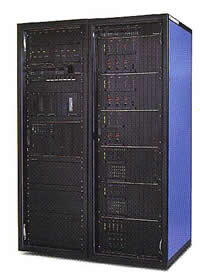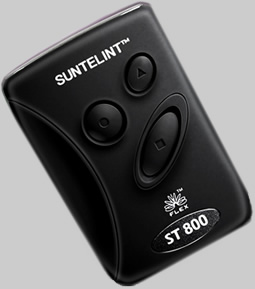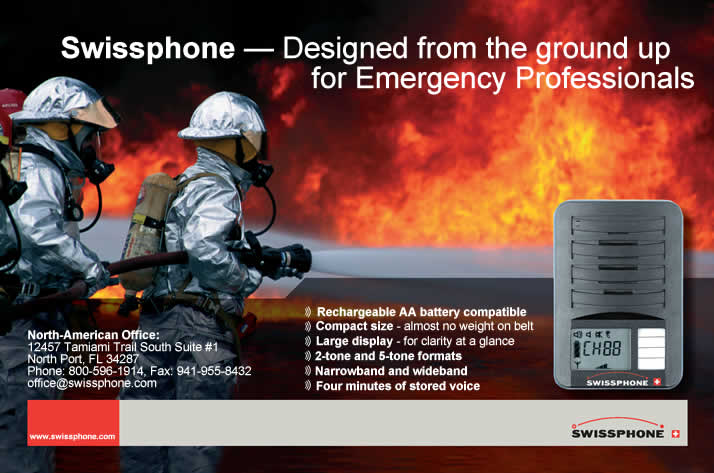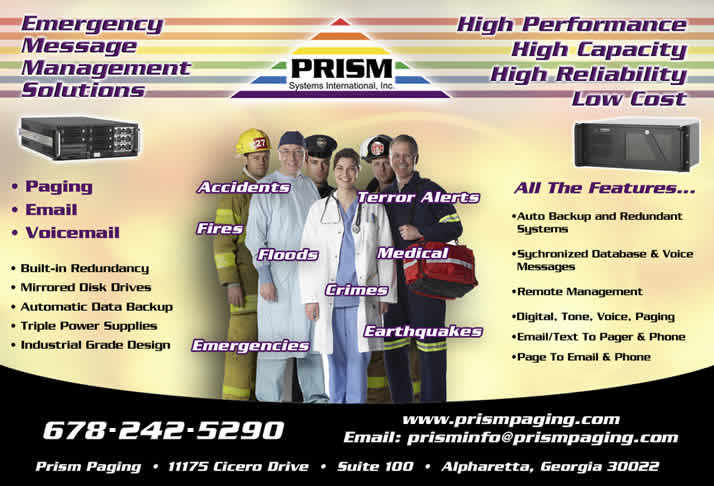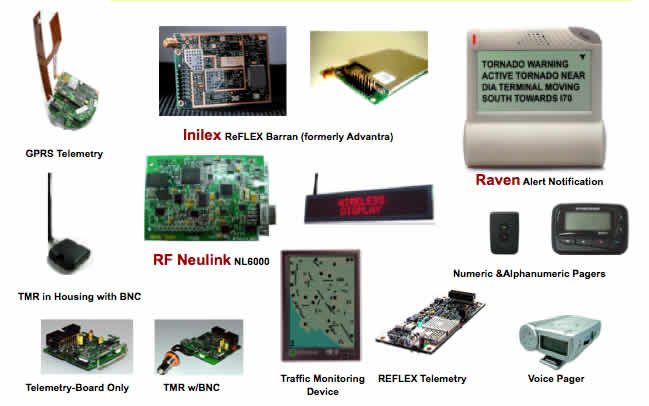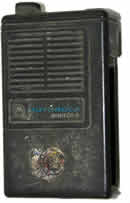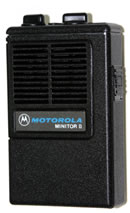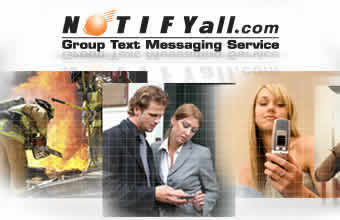BloostonLaw Telecom Update Published by the Law Offices of Blooston, Mordkofsky, Dickens, Duffy & Prendergast, LLP [Selected portions reproduced here with the firm's permission.] www.bloostonlaw.com | Vol. 12, No. 4 | January 28, 2009 |
REMINDER: CPNI ANNUAL CERTIFICATION IS DUE MARCH 2 Carriers should modify (as necessary) and complete their “Annual Certification of CPNI Compliance” for 2008 between January 1 and March 1. The certification must be filed with the FCC by March 2. (Normally this filing would be due March 1, but this year March 1 falls on a Sunday; therefore, FCC rules require filing on the next business day.) For 2007, the FCC Enforcement Bureau conducted a computerized audit to identify any non-filers, who may face sanctions. The CPNI filing requirement applies to all “telecommunications carriers”, which can include ILECs, CLECs, wireless carriers, paging companies, resellers and other service providers. If you are not sure whether the CPNI requirement applies to your company, you should contact us promptly. Note that the annual certification should include the information required by the FCC’s CPNI rule changes in 2007. A company officer with personal knowledge that the company has established operating procedures adequate to ensure compliance with the rules must execute the Certification, place a copy of the Certification and accompanying Exhibits in the Company’s CPNI Compliance Records, and forward the original to BloostonLaw for filing with the FCC by March 1 (March 2, this year). BloostonLaw has prepared a template to assist interested clients in meeting their CPNI certification requirements. We are prepared to help our clients meet this requirement, which we expect will be strictly enforced, by assisting with preparation of their certification filing; reviewing the filing to make sure that the required showings are made; filing the certification with the FCC, and obtaining a proof-of-filing copy for your records. Clients interested in obtaining BloostonLaw's CPNI compliance manual should contact Gerry Duffy (202-828-5528) or Mary Sisak (202-828-5554). House Panel OKs Portions Of NTIA Broadband Grants In Obama Stimulus Package The House Energy and Commerce Committee last week marked up and passed portions of The American Recovery and Reinvestment Act of 2009 (ARRA) (HR 1), the so-called Obama economic “stimulus” bill. The broadband package is a substitute amendment that would distribute $2.825 billion for wireless and wireline broadband services through a grant program administered by the National Telecommunications and Information Administration (NTIA). The additional $2.825 billion of Rural Utilities Service (RUS) broadband grants (BloostonLaw Telecom Update, January 21), as well as funding for the NTIA programs were authorized by the House Appropriations Committee. Both the NTIA and RUS funding provisions were included in the ARRA introduced January 26 by Speaker Nancy Pelosi (D-Calif.) and Appropriations Committee Chairman David Obey (D-Wis.). The Energy and Commerce substitute bill (HR 629) differs from the original draft bill in two primary ways. First, the substitute adds language to ensure greater transparency and accountability by requiring NTIA to issue an annual report assessing the impact and effectiveness of the grants. Second, the substitute makes clear that as many entities as possible are eligible to apply for a grant, including satellite companies. As Energy and Commerce Committee Chairman Henry Waxman noted, approximately $1 billion would go to the deployment of wireless service. The language establishes a goal that 25% of this amount will go to unserved areas and 75% to underserved areas. In addition, $1.8 billion would go to the deployment of broadband via fiber or other wires, again with a goal of 25% to basic broadband in unserved areas and 75% to advanced broadband underserved areas. The proposal aims to be technologically neutral, allowing participation by any eligible entity, including service providers, infrastructure companies, or a state or unit of local government. Eligible entities are required to abide by minimum speed requirements as well as other important policy goals. Under the proposed legislation, "advanced broadband," is defined in the legislation as 45 Mbps downstream and 15 Mbps upstream; ‘‘advanced wireless broadband service’’ means a wireless service delivered to the end user data transmitted at a speed of at least 3 megabits per second downstream and at least 1 megabit per second upstream over an end-to-end Internet protocol wireless network; and the term ‘‘basic broadband service’’ means a service delivering data to the end user transmitted at a speed of at least 5 Mbps downstream and at least 1 megabit per second upstream. The speed requirements are higher for underserved areas than unserved areas, reflecting what is technologically and economically feasible. Any company that participates in the program has to operate their facilities on an "open-access" basis, which will ensure that private entities cannot restrict lawful content that flows through taxpayer-funded broadband facilities. The terms “open access” and “wireless open access” are to be defined by the FCC 45 days after enactment of the legislation. States will play a key role in this program. Each participating state is required to submit to NTIA a report indicating which geographic regions in that state are priority areas for broadband deployment. Finally, in addition to minimum speed requirements, grant applicants and NTIA must also address other policy-related considerations, including the impact of the service on public safety, health care delivery, education, and computer literacy. The HR 629 substitute, which was introduced by Waxman, was also referred to the Committees on Ways and Means; Education and Labor; and Science and Technology regarding provisions that fall within their respective jurisdictions. As noted above, the Appropriations Committee has already approved funding for both the NTIA and the RUS broadband programs. BloostonLaw contacts: Hal Mordkofsky, Ben Dickens, Gerry Duffy, and John Prendergast. FCC EXTENDS DEADLINE FOR EMBARQ FORBEARANCE REQUEST REGARDING IP-TO-PSTN VOICE TRAFFIC: The FCC has extended, until April 11, 2009, the date by which the petition requesting forbearance filed by the Embarq Local Operating Companies be deemed granted in the absence of a Commission decision that the petition fails to meet the standards for forbearance under section 10(a) of the Communications Act. On January 11, 2008, Embarq filed a petition asking the Commission to forbear from any application or enforcement of the Enhanced Services Provider (ESP) exemption to Internet Protocol (IP)-to-Public Switched Telephone Network (PSTN) voice traffic. Specifically, Embarq requested that the Commission forbear from “enforcing the ESP exemption, as adopted by Commission orders” and from applying “section 69.5(a) of its rules to the IP-originated voice traffic that terminates on the PSTN.” Embarq additionally requested that the Commission “forbear from enforcing 47 U.S.C. section 251(b)(5) to . . . non-local traffic terminated as voice traffic on the PSTN.” The Commission released a Public Notice establishing a comment cycle for the petition on January 14, 2008. Section 10(c) of the Act states that a petition for forbearance shall be deemed granted if the Commission does not deny the petition for failure to meet the requirements for forbearance under section 10(a) within one year after the Commission receives it, unless the Commission extends the one-year period. The Commission may extend the initial one-year period by an additional 90 days if the Commission finds that an extension is necessary. As a result, the FCC is extending the deadline in this WC Docket No. 08-8 proceeding until April 11. BloostonLaw contacts: Ben Dickens, Gerry Duffy, and Mary Sisak. SENATE PASSES BILL DELAYING DTV TRANSITION DEADLINE: The U.S. Senate has passed S 328, a bill to postpone the deadline for the transition of analog to digital television (DTV) from February 17, 2009, to June 12, 2009. With respect to expired coupons for converter boxes, the bill allows the National Telecommunications and Information Administration (NTIA) to issue to a household one replacement coupon for each coupon that was issued to such household and that expired without being redeemed. BloostonLaw contacts: Hal Mordkofsky and John Prendergast VERIZON DISPUTES STORY SAYING IT IS GIVING UP COPPER IN FAVOR OF VOIP IN SEVEN YEARS: Verizon has disputed press reports that it plans to retire its copper plant within seven years and move completely to Voice over Internet Protocol (VoIP). A Bloomberg News story two weeks ago reported that Verizon intended to switch entirely to VoIP in seven years, beginning in Maryland. However, Verizon claimed that the story was wrong. In an interview with xchange, Verizon stated: “First, neither John nor anyone else here thinks that the traditional, circuit-switched phone network will be a thing of the past in seven years. What’s often called the public switched telephone network (PSTN) is the world’s most reliable, high quality, landline voice communications system. The Verizon traditional phone system will serve customers for a long time to come … [We] see that voice can and is becoming an application called VoIP on broadband networks. VoIP is a logical platform for any company wanting to break into the voice services business, and hundreds of companies have seized on this technology to do so, including every major cable TV company. However, the quality of VoIP voice calls and the reliability of VoIP networks are in no way superior to the quality and reliability provided by the Verizon PSTN network. In short, there is no logical reason for a company like Verizon, with a terrific voice network already in place, to dismantle that network and replace it with VoIP.” In other words, Verizon sees a gradual transition to VoIP, not a “magical blink” to VoIP in seven years. FCC Meetings and Deadlines Jan. 30 – Report of extension of credit to Federal candidates is due. Feb. 2 – FCC FORM 502, Number Utilization and Forecast Report , is due. Feb. 2 – FCC FORM 499-Q, Telecommunications Reporting Worksheet, is due. Feb. 2 – Deadline for comments on Rural Cellular Association petition regarding exclusivity arrangements between commercial wireless carriers and handset manufacturers (RM-11497). Extended from Dec. 2. Feb. 5 – FCC open meeting. Feb. 17 – DTV Transition. Feb. 20 – Deadline for reply comments on Rural Cellular Association petition regarding exclusivity arrangements between commercial wireless carriers and handset manufacturers (RM-11497). Extended from Dec. 22. Feb. 23 – Deadline for comments on CTIA proposal to transition cellular licensing to CMA geographic market areas (RM-
11510). Mar. 2 – CPNI Annual Certification is due. Mar. 2 – FCC FORM 477, Local Competition and Broadband Reporting Form, is due. Mar. 2 – Deadline for comments regarding possible changes to rules under Regulatory Flexibility Act (CB Docket No. 08-21). Mar. 5 – FCC open meeting. Mar. 9 – Deadline for reply comments on CTIA proposal to transition cellular licensing to CMA geographic market areas (RM-11510). Mar. 31 – FCC Form 507, Universal Service Quarterly Line Count Update, is due. Mar. 31 – FCC Form 525, Competitive Carrier Line Count Quarterly Report, is due. Mar. 31 – FCC Form 508, Projected Annual Common Line Revenue Requirement Form, is due. Mar. 31 – Annual International Circuit Status Report is due. Apr. 1 – FCC Form 499-A, Telecommunications Reporting Worksheet, is due. Apr. 10 – Auction 73 winners must file quarterly report covering DTV consumer education outreach efforts for period Jan.-Mar. 2009. Apr. 11 – Deadline for FCC to act on Embarq forbearance petition regarding IP-to-PSTN voice traffic, or have it deemed granted (WC Docket No. 08-8). May 1 – FTC begins enforcement of Red Flag Rules. 
BloostonLaw Private Users Update | Vol. 10, No. 1 | January 2009 |
FCC Proposes $12,000 Fine Against Private Radio Licensee For Unauthorized Fixed Operation The FCC has issued a Notice of Apparent Liability for Forfeiture (NAL) and Order, proposing to fine Visiplex, Inc., a licensee of Private Land Mobile Radio Service (PLMRS) stations, $12,000 for apparently operating its stations in a manner inconsistent with the terms of its authorizations. In 2001, Visiplex was granted a nationwide PLMRS license on certain 464 MHz frequencies with an output power and effective radiated power of 100 watts. In 2004, Visiplex was granted an additional nationwide PLMRS license with an output power and effective radiated power of 2 watts. Visiplex operates wireless synchronized clock radio systems for its customers under these nationwide licenses. The FCC’s Enforcement Bureau received a complaint alleging that Visiplex was operating its wireless synchronized clock radio systems at permanent fixed locations, notwithstanding that its licenses only authorize mobile operations. The complaint also alleged that Visiplex’s systems were operating at power levels in excess of its authorized power limits. On August 15, 2007, the Spectrum Enforcement Division of the Enforcement Bureau sent a Letter of Inquiry (LOI) to Visiplex requesting that the company respond to the allegations raised by the complaint. In its response dated September 14, 2007, Visiplex asserts that it was unaware that its license specified mobile operations. Visiplex explained that when it originally filed for its licenses with the Personal Communications Industry Association (PCIA), it specifically requested fixed location licenses. Visiplex further stated that after receiving the LOI, it contacted PCIA for clarification and only then did PCIA explain that the licenses were for mobile equipment. Finally, Visiplex indicated that its transmitters used under call sign WPJU326 operate at or below its authorized power limit. On February 25, 2008, the Bureau sent Visiplex a follow up LOI. In its March 18, 2008 response, Visiplex provided documentation indicating that its transmitters operate with an output power of “2 or 4 watts.” The Commission said it has long held that “licensees are responsible for the acts and omission of their employees and independent contractors,” and has consistently “refused to excuse licensees from forfeiture penalties where the actions of employees or independent contractors have resulted in violations.” Accordingly, it found that no reduction of the proposed forfeiture is warranted on this basis. BloostonLaw contacts: Hal Mordkofsky, John Prendergast, and Richard Rubino. Monitoring of 121.5 MHz Alerts From Boats and Planes Ends February 1 The FCC’s Wireless Telecommunications Bureau has issued a Public Notice reminding users of emergency locator transmitters used on aircraft (ELTs), and emergency position-indicating radio beacons used on ships (EPIRBs), that such beacons operating on frequency 121.5 MHz will no longer be “heard” by search and rescue satellites as of February 1, 2009. This change results from a decision by the international organization overseeing the satellite-based search and rescue system - COSPAS/SARSAT - that it will terminate satellite processing of distress signals from 121.5 MHz ELTs and EPIRBs as of that date. Consequently, users of ELTs and EPIRBs that send distress alerts on 121.5 MHz therefore must switch to beacons that operate at 406.0-406.1 MHz (406 MHz) if the alerts are to be detected and relayed via satellite. COSPAS-SARSAT is an international program established by Canada, France, Russia, and the United States to operate a satellite-based search and rescue system. The COSPAS-SARSAT satellite system uses satellites in low-earth and geo-stationary orbits to detect and locate aviators, mariners, and land-based users in distress by tracking distress alerts on 121.5 MHz and 406 MHz. In 2000, COSPAS/SARSAT announced plans to terminate satellite processing of distress signals from 121.5 MHz emergency beacons on February 1, 2009, and urged users to switch to 406 MHz beacons. The Commission has prohibited the use of 121.5 MHz EPIRBs on U.S.-registered vessels, and is considering a proposal to prohibit the use of 121.5 MHz ELTs on U.S.-registered aircraft. In addition, the National Oceanic and Atmospheric Administration, the U.S. Coast Guard, the U.S. Air Force, and the National Aeronautical and Space Administration, which administer the COSPAS/SARSAT system in the United States, advise users of 121.5 MHz emergency beacons to switch to 406 MHz beacons. When disposing of an obsolete 121.5 MHz beacon, users must disable the beacon to prevent false alerts by removing the batteries, which should be recycled or disposed of pursuant to local regulations. The termination of satellite processing of 121.5 MHz signals does not mean the end of the use of the frequency. Devices other than ELTs and EPIRBs (such as man-overboard systems and homing transmitters) that operate on 121.5 MHz and do not rely on satellite detection will not be affected by the phase-out. Nor will personal locator beacons (PLBs), which operate only on 406 MHz. BloostonLaw contacts: Hal Mordkofsky, John Prendergast, and Richard Rubino. FCC, Western Slope Enter Into Consent Decree Over Tower Lighting Violations The FCC has entered into a consent decree with Western Slope Communications, LLC, to terminate an enforcement proceeding relating to whether Western Slope violated the Communications Act and 17.57 the Commission's Rules regarding tower lighting. On April 23, 2007, at 6:39 p.m., an email was received by the Enforcement Bureau's Denver office from a police officer with the city of Rifle, Colorado. The email stated that there was a concerned citizen in Rifle, Colorado, who had observed a 400 foot tower near the citizen's home with the top beacon "out for the last two weeks." When the remote automatic tower light indicator system was checked, it reported no current for the tower light system while at the transmitter site. Apparently, this remote system, designed to register any tower lighting failures, had not been notifying Western Slope. The contract engineer determined the comprehensive lighting outage to be a result of a faulty A/C neutral wire. While agents were on-site, the contract engineer repaired the damaged wire. When the contract engineer covered the photocell, all of the lights, top beacon and mid-level side lights, were observed by the agents to be working properly. Finally, the contract engineer's maintenance logs, found at the transmitter site, showed the last entry reflecting an on-scene tower light inspection by him as being conducted on August 1, 2006. Western Slope agreed to make a voluntary contribution to the United States Treasury in the amount of $6,500 within 30 calendar days after the effective date of the consent decree. Western Slope also agreed that the following Compliance Plan will be put into place: - Western Slope shall install an automatic outage monitoring system to detect light outages and malfunctions on the antenna structure, which will be checked monthly to confirm that it is operating properly.
- An employee or agent of Western Slope will make a daily visual observation of the automatic outage monitoring system.
- Western Slope management will perform a monthly review of the outage log for the antenna structure.
- Western Slope will provide a contact telephone number to local police for emergency contact purposes.
BloostonLaw contacts: Hal Mordkofsky, John Prendergast, and Richard Rubino. 800 MHz Rebanding Wave 4, Stage 2 Negotiation Period Extended To April 1 The FCC’s Public Safety and Homeland Security Bureau (PSHSB) has extended the negotiation period for Wave 4 National Public Safety Planning Advisory Committee NPSPAC (Stage 2) and non-NPSPAC (Stage 1) licensees in the U.S.-Mexico border region until April 1, 2009, and postponed the beginning of the mediation period for such licensees until April 2, 2009. As noted in prior public notices, rebanding of Wave 4 licensees in the U.S.-Mexico border region is affected by ongoing international discussions with Mexico. Extending the negotiation period for these licensees will alleviate administrative burdens on licensees, avoid unnecessary rebanding expenditures, and provide additional time for resolution of border issues and issuance of frequency designations by the Transition Administrator (TA). During the extended negotiation period, Wave 4 licensees in the U.S. - Mexico border region are not required to engage in planning or negotiation prior to the receipt of frequency designations from the TA, although the FCC encourages them to engage in such activities to the extent that they are not frequency-dependent and would not result in unnecessary duplication of costs. If licensees choose to engage in such planning and negotiation activities, Sprint Nextel shall pay licensees’ reasonable costs in accordance with the requirements of the Commission’s orders in this proceeding. This extension also extends the filing freeze on new applications in the U.S.-Mexico border region until thirty working days after the April 1, 2009, date for completion of negotiations, i.e., until May 13, 2009. However, the freeze does not apply to modification applications that do not change an 800 MHz frequency or expand an 800 MHz station’s existing coverage area (e.g., administrative updates), assignments/transfers, or renewal-only applications. In addition, Wave 4 licensees in the U.S. – Mexico border region may expand their facilities or add channels during the freeze, based on an appropriate showing of public interest need, using the Special Temporary Authorization (STA) procedures described in the Bureau’s December 2006 STA Guidance Public Notice. Facilities that are authorized under the STA procedures will be subject to rebanding, and Sprint will pay the cost of relocating such facilities to their new channel assignments. The extension of negotiations and the application freeze does not apply to Wave 4 licensees along the U.S. - Mexico border that have received replacement channels from the Transition Administrator. Such licensees remain subject to the previously announced negotiation and mediation schedules for this wave. BloostonLaw contacts: Hal Mordkofsky, John Prendergast, and Richard Rubino. FCC Defers True-Up Date Until Rebanding Is Finished The FCC has adopted an order addressing the June 25, 2008, request by Sprint Nextel to defer the 800 MHz rebanding financial “true-up” process until after rebanding is completed. The FCC concluded that the true-up should be deferred until additional progress in rebanding has occurred, and therefore postponed the true-up date from December 26, 2008, to July 1, 2009. It also directed the 800 MHz Transition Administrator (TA) to file a report by May 1, 2009, with its recommendation on whether the true-up should be conducted on July 1, 2009, or postponed to a later date. The FCC then addressed several pending petitions for reconsideration or review of prior rebanding orders and public notices. First, it denied two petitions that seek reconsideration of its decision in the Second Memorandum Opinion and Order in this proceeding requiring parties to bear their own costs in rebanding-related litigation before the Commission. Second, it exercised its discretion to treat two pending petitions for de novo review filed by Sprint against Chesapeake, Virginia, and Chester County, Pennsylvania, as applications for review for purposes of resolving questions of law, and it allowed the parties to file oppositions and replies as provided under our application for review procedures. Third, it denied a petition for reconsideration that alleges that its Public Notice released on September 12, 2007, to expedite the rebanding process imposed unreasonable new regulatory burdens on 800 MHz licensees. Finally, the FCC delegate authority to the Public Safety and Homeland Security Bureau (PSHSB) to develop a rebanding plan for the U.S. Virgin Islands based on a proposal submitted by the TA. BloostonLaw contacts: Hal Mordkofsky, John Prendergast, and Richard Rubino. | 








 Unication Co., Ltd. a leader in wireless paging technologies, introduces a completely new Alpha Elegant/Dual and Alpha Legend/Dual.
Unication Co., Ltd. a leader in wireless paging technologies, introduces a completely new Alpha Elegant/Dual and Alpha Legend/Dual.


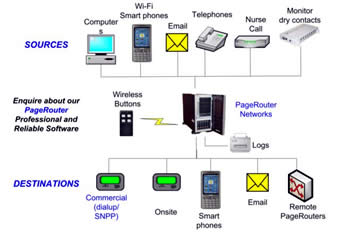
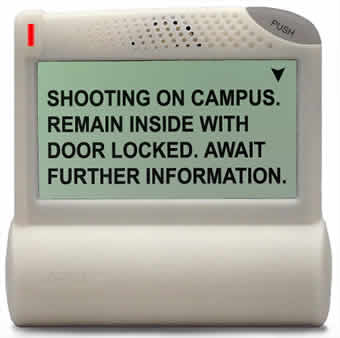

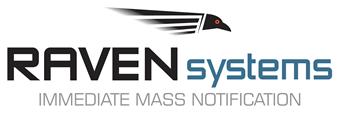
 BERKELEY — The start of a new semester is a good time to remind faculty and staff to sign up for WarnMe, Berkeley's new alerting and warning service, which is entering its second semester of helping to keep the campus community safe in case of an immediate crisis. And the more than 18,000 students, faculty, and staff who have enrolled since signup started last August are urged to check at the semester's start to make sure that their contact information is up to date.
BERKELEY — The start of a new semester is a good time to remind faculty and staff to sign up for WarnMe, Berkeley's new alerting and warning service, which is entering its second semester of helping to keep the campus community safe in case of an immediate crisis. And the more than 18,000 students, faculty, and staff who have enrolled since signup started last August are urged to check at the semester's start to make sure that their contact information is up to date.
